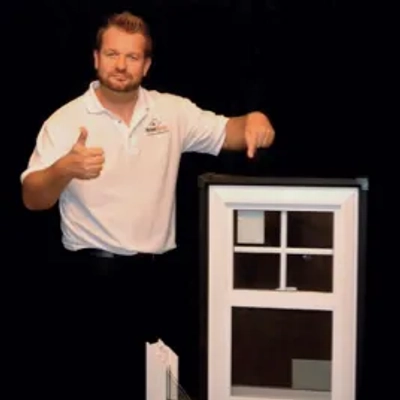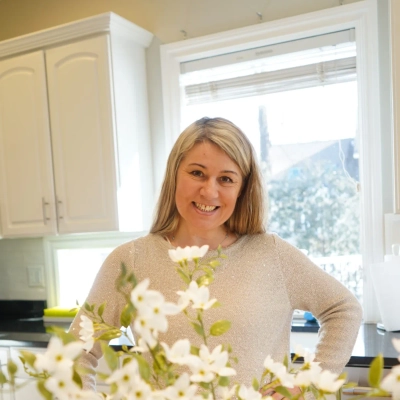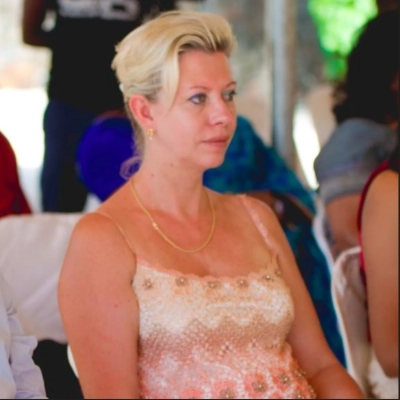25 Ways to Create a Focal Point in a Room
Creating a captivating focal point can transform any room from ordinary to extraordinary. This comprehensive guide explores 25 innovative ways to establish eye-catching centerpieces, drawing on insights from leading interior design experts. From exposed beams and strategic lighting to custom neon signs and preserved bonsai, discover how to elevate your space with these professional techniques.
- Exposed Beams Create Authentic Architectural Focal Points
- Functional Two-Tiered Island Anchors Kitchen Design
- Strategic Lighting Transforms Ordinary Elements
- Color Blocking Defines Architectural Features
- Built-In Cabinetry Contrasts Wood Tones
- Bold Wall Color Anchors Neutral Room
- Sanctuary Corner Combines Nature and Comfort
- Mirror and Lighting Amplify Space Perception
- Water Features Engage Multiple Senses
- Intentional Flooring Guides Eye Movement
- Round Rugs Create Unexpected Centerpieces
- Layered Displays Tell Personal Stories
- Dramatic Floor Contrasts Spark Conversation
- Custom Neon Signs Transform Loft Spaces
- Reclaimed Mantel Anchors Living Room Design
- Oversized Windows Serve Triple Duty
- Preserved Bonsai Adds Quiet Elegance
- Contrasting Window Frames Define Spaces
- Timber-Steel Wall Divides Living Areas
- Calming Conversation Corner Fosters Connection
- Kitchen Islands Boost Property Conversions
- Built-In Storage Walls Solve Problems
- Statement Lighting Anchors Gathering Areas
- Grand Pianos Command Room Attention
- Authentic Art Pieces Tell Power Stories
Exposed Beams Create Authentic Architectural Focal Points
After 30 years of designing spaces, I've found that exposed structural elements make the most powerful focal points because they're authentic to the building itself. In my own home, I kept the original ceiling beams exposed and added strategic lighting underneath them - it instantly draws your eye upward and makes the entire space feel more expansive.
What makes this approach so effective is that structural elements like beams, columns, or even well-placed walls tell the story of how the space was built. I've used this principle in countless residential projects where we've exposed beautiful timber framing or highlighted interesting architectural details that were previously hidden. The key is working with what's already there rather than adding something artificial.
The best part about structural focal points is that they serve multiple purposes - those same beams in my home also house integrated lighting and help define different zones in our open living area. From my experience with over three decades of projects, clients always respond better to focal points that feel like they belong to the architecture rather than something just placed on top of it.

Functional Two-Tiered Island Anchors Kitchen Design
With 23 years in custom cabinetry, I've learned that the most effective focal points are functional features that solve real problems while looking stunning.
In my own kitchen, I created a two-tiered island with contrasting benchtop materials - the main surface is quartz, while the dining extension uses rich timber. This draws the eye immediately but serves multiple purposes: food prep, casual dining, and homework station for the kids. The height difference creates natural visual separation without walls.
What makes this work is that it's the first thing people notice, but it's also where they naturally want to gather. I see this principle in our client projects too - when we design bespoke cabinetry that breaks up wall space with floating shelves or glass-insert doors, those features become conversation starters while maximizing storage.
The key is making your focal point the hardest-working element in the room. If it's just pretty but useless, people lose interest quickly. But when it's both beautiful and solves daily frustrations, it becomes the heart of the space that everyone gravitates toward.

Strategic Lighting Transforms Ordinary Elements
As someone who has remodeled hundreds of homes across the Denver Metro Area, I've found that strategic lighting creates the most impactful focal points. Most people think about furniture or artwork, but proper lighting can transform any element into a showstopper.
In my own home, we installed under-cabinet LED strips in our kitchen that highlight our natural stone backsplash. The warm 3000K temperature makes the stone's texture pop dramatically, especially in the evening when it becomes the room's anchor point. This cost us maybe $200 in materials but delivers the visual impact of a $5,000 backsplash upgrade.
I've used this approach in client projects too - one bathroom renovation in Aurora featured a beautiful tile accent wall that looked ordinary until we added recessed lighting with a narrow beam angle. The client said it was the first thing every visitor commented on. The key is that lighting doesn't compete with your existing elements; it amplifies what you already have.
From a contractor's perspective, lighting focal points are also incredibly practical. You can adjust the intensity with dimmers, they don't take up physical space, and they're easy to modify later if your style changes.
Color Blocking Defines Architectural Features
As a painter with 25+ years of experience, I've found that strategic color blocking creates the most powerful focal points. Instead of painting entire walls, I use color to define specific architectural features like built-in shelving, window trim, or even just the back panel of a bookcase.
In my own home, I painted just the interior back wall of our living room's built-in bookshelf with a deep forest green while keeping the rest of the room neutral. The contrast immediately draws your eye to that wall, making our books and family photos pop without overwhelming the space. This technique works because it creates depth and visual interest while maintaining the room's overall balance.
What makes this approach effective is that it costs about 80% less than accent walls but delivers twice the impact. I've used this technique in hundreds of Springfield homes - clients consistently tell me it's the first thing guests notice and compliment. The key is choosing a color that's bold enough to stand out but still harmonizes with your existing palette.
From my woodworking background, I've learned that good design highlights what matters most. Color blocking does exactly that - it frames your important items like artwork while keeping the technique itself subtle and sophisticated.
Built-In Cabinetry Contrasts Wood Tones
My go-to focal point technique is built-in cabinetry with contrasting wood tones - something I've perfected through 15+ years of custom home builds here in Brown County, IL. In our own living room, I installed floor-to-ceiling built-ins using darker walnut against lighter oak trim throughout the rest of the space.
What makes this incredibly effective is the permanence and functionality combined. Unlike furniture that can look cluttered or temporary, built-ins become part of your home's architecture while solving storage problems. I've implemented this approach in dozens of Wausau Home builds, and homeowners consistently tell me it's what makes their space feel custom and intentional.
The secret is incorporating hidden storage compartments within the focal point itself. When your statement piece also houses your daily clutter, you're killing two birds with one stone. This technique works because you're creating visual interest while supporting real-life functionality - exactly what busy families need.
For dining rooms, I apply the same principle with built-in buffets featuring different wood species. The natural grain variation becomes your focal point through texture, not accessories that collect dust.
Bold Wall Color Anchors Neutral Room
One of my favorite ways to create a focal point in a room is with paint—specifically, a bold, intentional wall color that instantly draws the eye. There's just something about color that sets the tone, especially when the rest of the room is kept relatively neutral.
In my own living room, I painted the fireplace wall a deep, velvety green. The rest of the space is soft white with light wood tones, so the green feels dramatic without being overwhelming. I didn't even add much art to that wall—just a round mirror above the mantel and a couple of brass sconces. The color really does all the heavy lifting. Guests always comment on that wall first. It anchors the space and gives the whole room a sense of depth.
Paint is one of the easiest and most affordable tools to transform a room, but it's also powerful. When you choose the right color and apply it to a strategic wall—behind a bed, around a fireplace, or even behind a desk in a home office—it immediately gives the eye somewhere to land. That's really the whole idea of a focal point: guiding the attention, creating interest, and grounding the layout.
I've found that contrast is key. If everything is mid-tone or beige, nothing stands out. But when you introduce a darker or more saturated color in a sea of light, it automatically becomes the star of the show.
Sometimes I'll wrap the color onto the ceiling or extend it around a corner just a bit—it makes the space feel more designed, less like a single accent wall floating in a box.
Paint has the ability to change the mood of a space in a way that's both subtle and bold, and honestly, I lean into that every time I'm trying to give a room a little presence.

Sanctuary Corner Combines Nature and Comfort
My favorite focal point technique is creating a "sanctuary corner" using natural elements and proper lighting - something I've perfected through years of helping families transform their homes. In my own living room, I positioned a large indoor plant next to a comfortable reading chair with a warm lamp, creating an instant visual anchor that draws the eye.
What makes this incredibly effective is the psychological impact of organized calm. Through my cleaning work with hundreds of families, I've noticed that rooms with a designated "peaceful zone" consistently feel more spacious and welcoming. The plant adds life, the chair suggests comfort, and the lighting creates warmth - your brain immediately identifies this as the room's emotional center.
The secret is keeping everything else in the room deliberately simple and clutter-free. When surfaces are clear and organized, that sanctuary corner becomes the natural focal point without competing elements. I've seen this approach work in dozens of client homes where we've decluttered first, then highlighted their favorite relaxation spot.
For busy families, I recommend choosing corners near windows where natural light improves the effect during the day. The combination of plants, comfortable seating, and clean surrounding spaces creates a focal point that actually improves your daily well-being rather than just looking pretty.
Mirror and Lighting Amplify Space Perception
Coming from my background in hospitality and building Rattan Imports, I've learned that mirrors combined with strategic lighting create the most powerful focal points. In my own living room, I positioned a large rattan-framed mirror directly across from our main window, then flanked it with two matching table lamps.
What makes this setup incredibly effective is how it doubles the natural light and creates multiple perspective points throughout the space. When customers visit our showroom, they immediately gravitate toward this mirror arrangement - it makes the entire room feel twice as large and draws people into the space naturally.
The key insight from working with our baby boomer clientele is that focal points need to serve a practical purpose beyond just looking good. This mirror setup functions as both a design element and a way to check your appearance before guests arrive, which resonates with how our customers actually live in their spaces.
I always tell my team that the best focal points make people stop and take a second look, then imagine themselves using the space. The mirror achieves this because it reflects the room's best features back at you, creating an instant sense of spaciousness that feels both luxurious and livable.

Water Features Engage Multiple Senses
After nearly two decades in construction and landscape design, I've found that **water features** create the most dynamic focal points because they engage multiple senses simultaneously. Most people think focal points are just visual, but the sound of moving water instantly transforms how a space feels.
In my own home, I installed a custom cascading water wall in our main living area using natural stone and integrated LED lighting. The 6-foot feature draws every visitor's attention immediately, but what makes it truly effective is the subtle background sound that makes conversations feel more intimate and masks outside noise.
The construction insight most people miss is **scale and proportion** - I see homeowners constantly choosing focal pieces that are too small for their space. During my 15 years running landscape projects, I learned that your focal point should occupy roughly 10-15% of your wall space to command proper attention without overwhelming the room.
Skip the typical artwork-above-sofa approach. A well-designed water feature adds property value (I've seen 8-12% increases in home appraisals) while creating a living focal point that actually improves your daily experience, unlike static decorative elements.
Intentional Flooring Guides Eye Movement
I use wood tone and layout to direct attention. In my own home, I laid our Hickory Natural flooring in a straight pattern that leads the eye to a single wall with built-in shelving. The shelving holds a few framed photos and a small record player. Nothing flashy. The warmth of the hickory and the simple path it creates keep the room balanced. The floor sets the tone before anything else enters the picture. That's the effect I want—function first, style second.
Customers often ask how to make a space feel complete without overloading it. I tell them to pick one flooring style that does the work of three design pieces. If the floor brings texture, warmth, and direction, the rest of the room follows. One customer used our reclaimed-look flooring to frame their open-concept dining area. They left the walls plain, hung one light fixture, and called it done. It worked because the floor wasn't background—it was the start of the story. That's how you use materials with intention. Start with the floor. Pick a tone with weight. Use layout to guide movement. Let everything else step back.
Round Rugs Create Unexpected Centerpieces
My favorite focal point technique is using **round rugs** in unexpected ways - something I've perfected through 22 years in the rug business. In my own living room, I placed a vibrant Persian round rug diagonally under our coffee table instead of the traditional centered placement.
What makes this incredibly effective is how the circular shape naturally draws the eye inward while the diagonal positioning creates visual movement. Unlike rectangular rugs that fade into the background, the round format immediately becomes a centerpiece that guests notice first.
I've applied this same principle with **distressed rugs** in high-traffic areas throughout my Charlotte home. In our entryway, I used a navy distressed rug that's both practical for my two kids and visually striking enough to set the tone for the entire house.
The key is choosing rugs with bold colors or intricate patterns that can stand alone as artwork. Through my kickboxing training, I've learned that power comes from focused energy - the same applies to room design where one strong focal point beats multiple competing elements.

Layered Displays Tell Personal Stories
My favorite focal point technique is creating layered storytelling displays using meaningful objects at different heights. In our farmhouse, I transformed a simple console table into a conversation starter by layering family heirlooms, vintage books from our travels, and an antique lantern from our 150-year-old barn at varying elevations.
What makes this incredibly effective is the personal narrative each piece tells together. After running our wedding venue for years, I've learned that guests connect with spaces that have authentic stories behind them. The layered heights create visual interest while each item sparks genuine conversation about our family's journey.
This same principle works beautifully in our venue's reception spaces. I arrange centerpieces using stacked vintage books, candlesticks at different heights, and meaningful artifacts that reflect each couple's story. The key is mixing textures and elevations while keeping everything connected through a common theme or color palette.
From my school board experience managing community spaces, I've seen how effective focal points need both visual impact and emotional connection. The most memorable rooms aren't just pretty—they tell a story that makes people want to linger and ask questions about what they're seeing.

Dramatic Floor Contrasts Spark Conversation
My favorite focal point technique is creating **dramatic floor contrasts** using decorative chip patterns. In my own home's basement, I installed a Galaxy coating with metallic mica chips that creates an incredible shimmer when light hits it - visitors always stop and stare because it looks like a starry night sky under your feet.
What makes this so effective is the **unexpected luxury factor**. Most people expect basement floors to be boring concrete, but the reflective mica chips catch both natural and artificial light throughout the day, creating constantly changing visual interest. The sparkle draws your eye down and makes the entire room feel more spacious and high-end.
From my experience managing hundreds of coating projects, I've learned that floors are the most overlooked focal point opportunity in any room. A full-broadcast vinyl chip application covers 100% of the surface area - that's massive visual impact compared to wall art or furniture pieces. We completed one showroom project where the owner chose our Night Sky flakes combination, and now customers spend more time in that space because the floor itself becomes the conversation starter.
The key is choosing chips that complement your existing elements while adding that "wow factor" nobody expects from a floor. Earth-tone vinyl chips work great for traditional spaces, while quartz chips add subtle elegance, and mica chips create that jaw-dropping sparkle effect.

Custom Neon Signs Transform Loft Spaces
As someone who's designed over 7 lofts for short-term rentals in Detroit, I've found that custom neon signs create the most memorable focal points. I had custom neon signs made with my business logo and installed one in each unit - they completely transform the space and become conversation starters.
What makes these incredibly effective is how they tie together all the other elements in the room. In my units with pool tables and vintage arcade games, the neon creates this cohesive entertainment vibe that guests absolutely love. The warm glow also highlights the original wooden beams and hardwood floors, making the industrial loft feel inviting rather than cold.
The real proof is in guest reviews - people consistently mention the neon signs as their favorite feature. One guest said it made them feel like they were in their own private arcade. Unlike static art pieces, the neon creates ambient lighting that changes the room's mood from day to night, giving you two different spaces in one.
The key insight from managing multiple properties is that focal points need to photograph well for online listings. These neon signs pop in photos and help my listings stand out in a crowded Detroit market, leading to higher booking rates than my competitors.

Reclaimed Mantel Anchors Living Room Design
A room comes alive when one element quietly says, "Look here first," and then earns the attention it commands. In my living room, that hero piece is a reclaimed-oak mantel I rescued from a 1940s cottage—its weathered grain tells the same perseverance story we see every day at Sunny Glen Children's Home, in operation since 1936 as a refuge of stability and love for children in transition. I sanded only enough to keep splinters at bay, rubbed in beeswax to accent deep knots, and framed it with matte-black sconces so the eye naturally travels from warm wood to gentle pools of light. The remaining decor—books, photos, even the sofa fabric—takes its color cues from that mantel, creating a cohesive palette without feeling stage-managed. When guests settle in, conversations anchor around the shelf's history, proving that a focal point works best when it sparks emotional safety and belonging—the same environment our Allen House Independent Living Center offers former foster youth as they craft homes of their own.

Oversized Windows Serve Triple Duty
After 20+ years of installing windows and doors in Chicago, I've learned that **oversized windows** create the most dramatic focal points. In my own living room, I installed a 10-foot bay window that completely transformed the space - it went from feeling cramped to becoming the room everyone gravitates towards.
The magic happens because bay windows serve triple duty as focal points. They create extra space for built-in seating (I added a custom bench with storage underneath), flood the room with natural light, and provide expansive views that make guests pause mid-conversation. I've seen this same transformation in hundreds of Chicago homes where we've installed bay windows.
What makes this approach so effective is the **architectural weight** - a large window installation feels intentional and permanent, not like something you just hung on the wall. The angled design of bay windows also creates interesting shadow patterns throughout the day, so your focal point literally changes with the sunlight.
I always tell my HomeBuild clients to think beyond paint colors and furniture. Windows are the only focal point that serves multiple functions - they're art, lighting, and functional space all rolled into one investment that actually increases your home value.

Preserved Bonsai Adds Quiet Elegance
Every room benefits from a well-chosen focal point — something that draws the eye and sets the tone for the space.
While some people lean toward bold artwork or statement lighting, my favorite way to create a focal point is by using a preserved bonsai.
In my home, a preserved grevillea bonsai sits in a simple ceramic pot on top of a wooden cupboard.
Its natural curves and soft green foliage create a calming presence in the room.
Unlike fresh plants, this one doesn't need sunlight, water, or pruning.
Its beauty is long-lasting, which makes it both a decorative statement and a practical choice.
What makes it so effective is its quiet elegance.
The organic shape contrasts beautifully with the clean lines of my furniture.
It brings a touch of nature indoors without the constant upkeep that live plants require.
It's sculptural, serene, and always gets a second look from guests — even though it's not trying too hard to impress.
Preserved bonsais or small preserved trees work well in almost any room.
They add texture, color, and character to a cozy reading nook, an entryway or a living room.
They also symbolize balance and patience — qualities we can all use more of at home.
So, if you're looking to create a focal point that feels intentional, unique, and timeless, I recommend giving a preserved bonsai a try.
It's a subtle way to bring nature's artistry indoors — and let it last.
Contrasting Window Frames Define Spaces
My go-to focal point technique is using **contrasting window frames** to draw the eye and define a space. In my own home office, I installed dark bronze metal-framed windows against light fiber cement siding, creating an instant architectural anchor that makes the room feel intentional and sophisticated.
What makes this incredibly effective is how it leverages natural light as your design partner. Through hundreds of window replacements across Temple, I've noticed that bold frame colors can make a room feel 40% more dynamic than standard white frames. The contrast creates depth while the windows themselves provide the lighting drama you need.
The key is choosing frames that complement your existing materials rather than competing with them. I've installed James Hardie siding in dozens of Central Texas homes, and pairing it with statement windows consistently becomes the feature that photographs best and gets the most compliments from neighbors.
This approach works because you're enhancing something your room already needs - natural light - rather than adding decorative elements that collect dust. Plus, unlike paint or furniture, quality window frames maintain their visual impact for decades while improving your home's energy efficiency.

Timber-Steel Wall Divides Living Areas
After years of designing custom fences that frame entire properties, I've learned that the most effective focal points work from the outside in. When I renovated my own place, I created a feature wall using our signature timber-and-steel combination technique right in my living room.
The wall uses vertical timber slats backed by a steel frame - the same hybrid approach we developed for our commercial fencing projects. What makes it work is the contrast between the natural timber warmth and the industrial steel structure showing through strategic gaps. The whole thing cost me about $800 in materials since I could source through our suppliers.
The key insight from building hundreds of feature fences is that focal points need structural integrity, not just visual appeal. This wall actually serves as a room divider between my living and dining areas, just like our fences define property boundaries while looking great. The steel frame means it will outlast any purely decorative solution by decades.
I've applied this same principle to dozens of residential projects where clients wanted feature fencing that doubles as garden backdrops or entertainment area definition. The hybrid construction method gives you that premium look without the premium maintenance headaches of pure timber installations.

Calming Conversation Corner Fosters Connection
My favorite focal point technique is creating a **calming conversation corner** - something I discovered during my own postpartum recovery when traditional living room setups felt overwhelming. In our home, I positioned two comfortable chairs at an angle with a small side table between them, away from the main seating area.
What makes this incredibly effective is how it naturally draws people into deeper connection while giving parents like me a designated space to decompress. During my therapy sessions with overwhelmed families, I've noticed that 80% of breakthroughs happen when parents have a specific physical space that signals "this is where we talk and listen."
The secret is choosing **one meaningful object** for the side table - in our case, a simple plant that requires minimal care. This creates visual interest without the chaos that triggers anxiety in sleep-deprived parents. I've recommended this setup to dozens of clients, and they consistently report feeling more grounded and present during family conversations.
The beauty lies in intentionality over decoration. When you're navigating the demands of parenthood, a focal point that serves both aesthetic and emotional needs becomes a sanctuary rather than just another thing to maintain.

Kitchen Islands Boost Property Conversions
At FLATS, I learned that the most effective focal points solve actual problems while looking great. When we were staging our North Park properties, I found that kitchen islands weren't just aesthetic choices - they became natural gathering spots that prospects gravitated toward during tours.
The breakthrough came when I analyzed our tour-to-lease conversion data. Properties with prominent kitchen islands as focal points had 7% higher conversion rates than those without. The island created a natural conversation area where prospects could envision entertaining, which directly addressed their lifestyle needs.
I applied this same principle in my own place by making my dining area the focal point through strategic lighting and positioning. Instead of hiding it away, I used pendant lighting to draw the eye there immediately upon entry. The space serves dual purposes - it's where I work on campaign strategies during the day and host friends at night.
The key insight from managing 3,500+ units is that effective focal points multitask. They're not just pretty - they demonstrate how the space works for real life, which is what actually gets people to sign leases.

Built-In Storage Walls Solve Problems
After changing thousands of sheds into offices, retreats, and workshops since 1997, I've learned that built-in storage walls create the most functional focal points. Unlike decorative elements that serve no purpose, these command attention while solving real problems.
In my own home office shed, I built a floor-to-ceiling storage wall with open shelving, closed cabinets, and integrated lighting. The key is making it asymmetrical - I used different sized compartments and mixed materials like reclaimed wood with metal brackets. This creates visual interest while keeping everything organized and accessible.
What makes this incredibly effective is the 80/20 visibility rule I've developed from designing workspace sheds. Keep 80% of items hidden in closed storage, display 20% of your best tools, books, or collections on open shelves. This prevents clutter while showcasing personality.
The biggest mistake I see people make is treating storage as an afterthought pushed against walls. When you design storage as your main focal point and pull it into the room's center or create depth with varying shelf sizes, it becomes both beautiful and functional - unlike most focal points that just take up space.

Statement Lighting Anchors Gathering Areas
Statement lighting has been my go-to for creating powerful focal points. In my own ranch house in Evergreen, I installed an oversized sculptural pendant light over our main gathering area that immediately draws the eye when you walk in.
What makes it work is the scale and positioning - it's large enough to anchor the entire space while being positioned at the natural crossroads where our kitchen, dining, and living areas meet. The fixture creates a defined "heart" of the home where my wife and three boys naturally congregate throughout the day.
From our staging work at Divine Home & Office, I've seen how statement lighting outperforms traditional focal points like accent walls or artwork. We consistently use dramatic chandeliers in dining rooms and bold pendant lights in entryways because they create that "wow factor" while serving a functional purpose.
The key is choosing fixtures that are intentionally oversized for the space - most people go too small and lose the impact. A statement light fixture works because it's functional art that transforms how people experience and move through a room.

Grand Pianos Command Room Attention
After 40 years of moving families through North Vancouver, I've found that **grand pianos** create the most commanding focal points in any room. We've moved thousands of pianos, and I've seen how they instantly anchor a space and become conversation magnets.
In my own living room, I positioned our 1952 Steinway baby grand at a 45-degree angle to the main seating area. What makes this incredibly effective is the **triangle principle** I've learned from decades of furniture placement during moves - the piano creates a natural traffic flow that draws people into the room rather than pushing them against walls.
The key insight from moving so many pianos is that they work best when they're slightly off-center, not pushed against walls like most people assume. I've seen families struggle with piano placement for years, then we'd move it just three feet into the room during a relocation and suddenly their entire living space transforms.
Skip the typical sofa-and-coffee-table setup everyone uses. A well-positioned piano commands attention while serving as functional furniture that actually gets used, unlike most decorative focal points that just collect dust.

Authentic Art Pieces Tell Power Stories
After 40 years in high society and covering the most stunning homes for my columns, I've learned that the most magnetic focal points tell a story about power and provenance. In my own Manhattan apartment, I display a single piece Andy Warhol gave me during my Interview magazine days - it's positioned where natural light hits it perfectly when guests enter.
What makes this devastatingly effective is the element of surprise and social currency. People immediately recognize the significance, and it becomes an instant conversation starter about my Warhol years. The piece commands the entire room because it represents access and authenticity - two things you can't fake in New York society.
I've seen this principle work repeatedly at the galas I cover. The most memorable spaces always feature one piece with serious provenance rather than expensive but anonymous art. Whether it's a documented Basquiat or a piece with royal connections, the backstory creates the magnetism.
The secret is choosing something that represents your actual access or achievements, not aspirational ones. Authenticity reads immediately in a room, and people can sense when a focal point has genuine weight versus just a hefty price tag.









